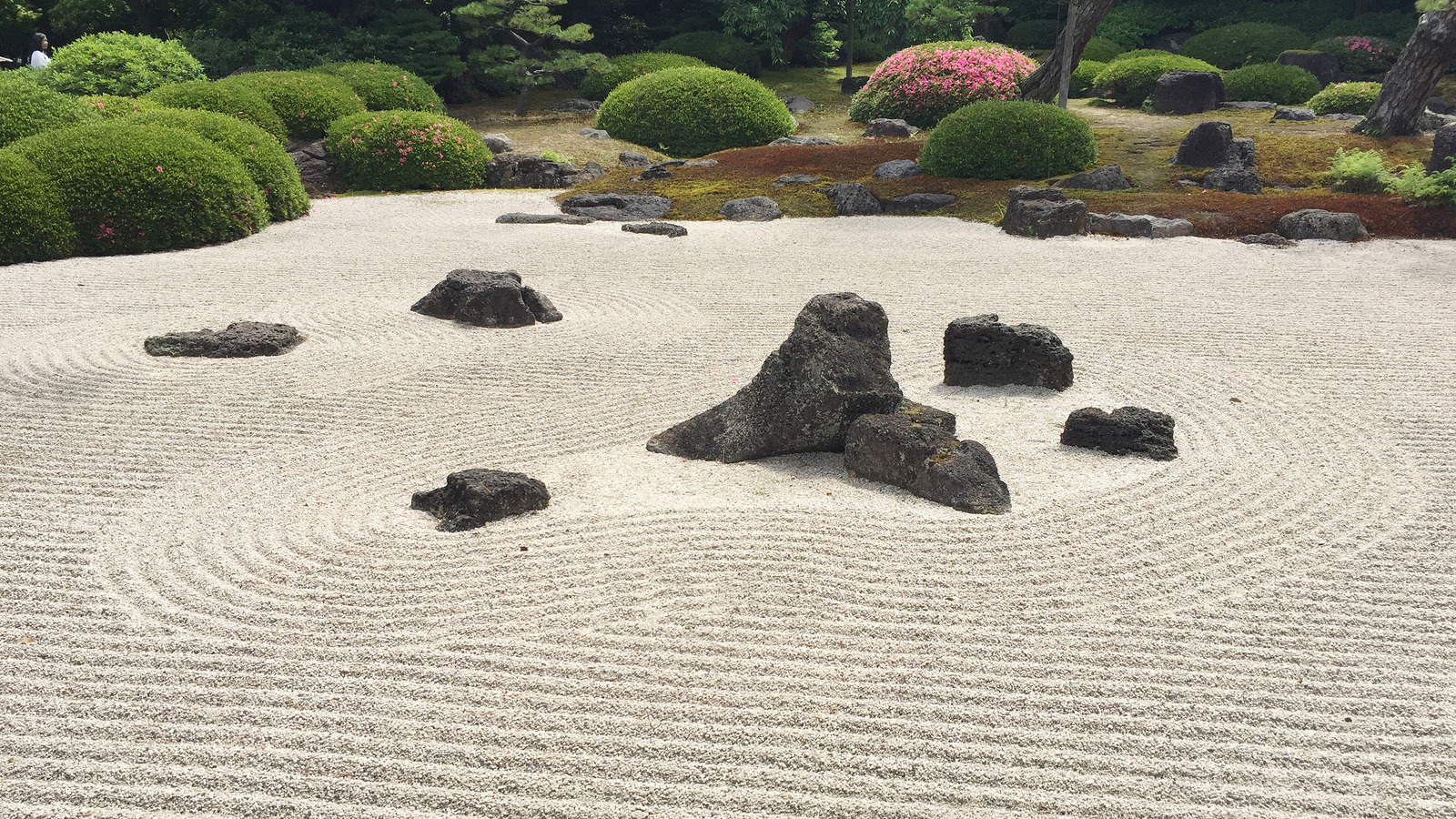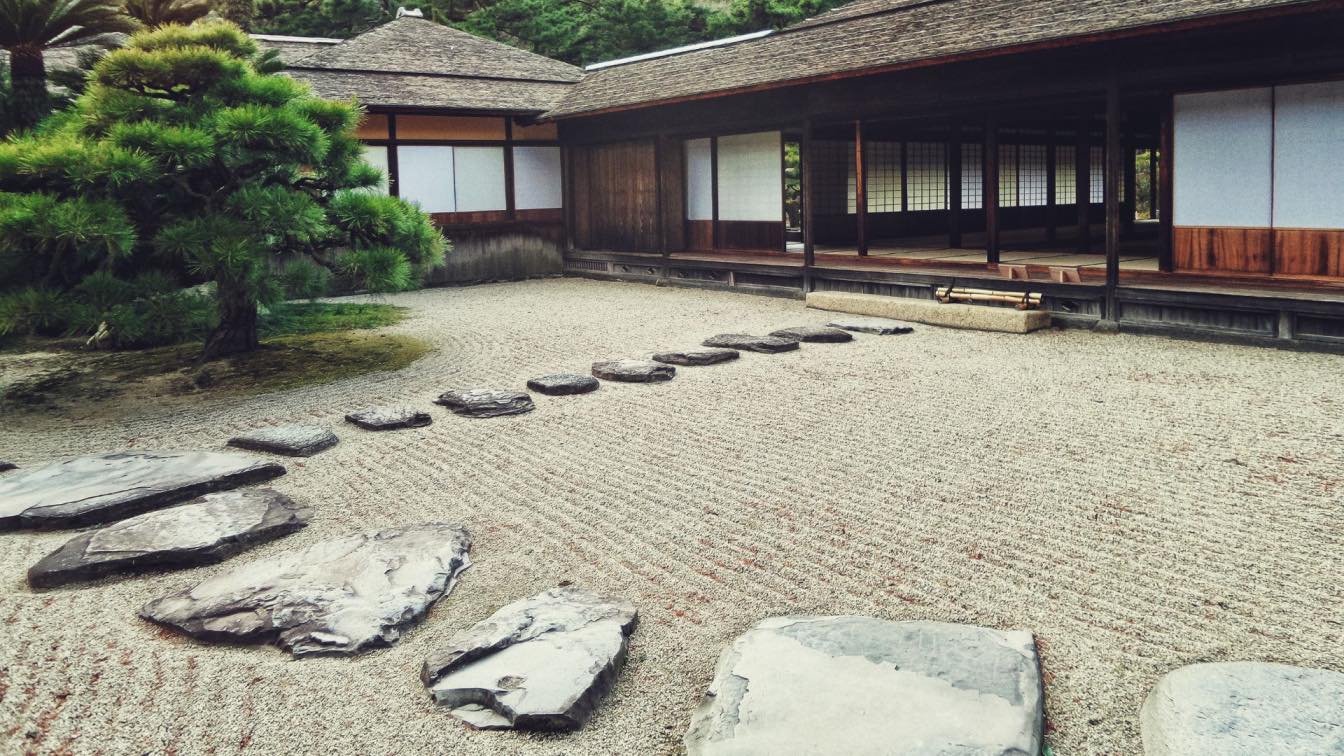Inspiration for Japanese Zen Garden Design for Your Home Landscape

Garden design plays an essential role in creating a peaceful and comfortable atmosphere at home. One popular concept that often evokes tranquility is the Japanese-inspired zen garden. A zen garden, also known as a karesansui or dry garden, is designed for meditation and reflection. It is an integral part of Japanese culture, focusing on simplicity, calmness, and harmony with nature.
In this article, we’ll explore design inspirations for creating a zen garden at home, key elements to consider, and how to build a small garden that serves as a place for meditation and relaxation.
The Philosophy Behind Zen Gardens

Source: gardeningetc.com
Zen gardens are rooted in the Zen philosophy, where simplicity and meditation are the main focus. This philosophy is evident in the elements of the garden, which reflect tranquility and contemplation, often through strong symbolism. Rocks, gravel, sand, and water are the dominant elements, used to represent mountains, rivers, or seas, all arranged in a very minimalist form.
The beauty of a zen garden lies in its simplicity. There is no excess of ornaments or bright colors; instead, attention is given to natural elements and how they are arranged. This creates a space for reflection and connection with nature in a serene environment.
Essential Elements in a Zen Garden
To create an authentic and functional zen garden, several main elements must be considered:
Sand and Gravel

Source: housebeautiful.com
Sand or gravel is a primary component of a zen garden, often used to represent water or the sea. Gravel is usually raked with a special tool to create wave patterns, symbolizing water movement. The process of raking the gravel into different patterns has its own meditative meaning, providing calmness to the person doing it.
In a home garden design, you can create a smaller area with white or grey gravel to establish a clean and peaceful ambiance. Ensure that the gravel is neatly arranged and follows natural patterns to maintain harmony with the other elements.
Natural Stones

Large and small stones symbolize mountains or islands in the zen garden. These stones are carefully placed to provide a natural impression without being excessive. The shape, size, and texture of the stones are all considered in their placement. Stones are usually arranged in groups of three to maintain aesthetic balance.
For your home garden, you can use natural stones of various sizes to create an appealing yet simple structure. Stones should have a natural, unpolished look to give an organic, earthy feel.
Minimalist Plants

Source: pngtree.com
Plants in zen gardens are used sparingly and are typically limited to certain types, such as moss, bamboo, and bonsai trees. These plants are chosen not for their color, but for the form and texture they add to the garden.
If you want to include plants in your home zen garden, try selecting low-maintenance species. Moss can be used to cover large rocks, while bamboo or bonsai trees can be placed in specific corners to add a natural touch. Be sure not to overcrowd the garden with plants to maintain the Zen philosophy of simplicity.
Bridges or Pathways

Source: amazingarchitecture.com
Small bridges or stone pathways are important elements in a zen garden, symbolizing life’s journey and transitions. Bridges are usually made of wood or stone and placed over areas of sand or gravel. A pathway of small stones leading to the center of the garden can provide a sense of movement toward a meditative space.
At home, you can create pathways with natural stones, spaced apart to create a relaxed, informal look. Choose flat stones and adjust their size to match the scale of your garden to ensure the proportions are balanced.
Water and Ponds

Source: deeperjapan.com
While traditional zen gardens often do not feature real water, modern additions of ponds or small waterfalls can bring a refreshing element. Water adds a new dimension by providing soft sounds that soothe the mind.
If space allows, consider building a small pond with gently flowing water. For smaller areas, a miniature fountain or a small container to hold water can be practical alternatives. The sound of water will add a calming, meditative element to the garden.
Creating a Zen Garden at Home

Source: edwardgeorgelondon.com
After understanding the core elements of a zen garden, you can start planning your Japanese-inspired garden at home. The first step is to choose the right space. A zen garden doesn’t require a large area; it can be created in a corner of your yard, on a patio, or even indoors if designed properly.
Determining Scale and Location

Source: saktidesain.com
The best location for a zen garden is in a quiet, secluded area away from distractions. Choose a space large enough for the elements to be arranged harmoniously, but don’t worry if you only have a small plot of land. Zen gardens can be scaled down to fit the size of your yard as long as the focus remains on the balance between elements.
Preparing the Base

Source: homedepot.com
After deciding on the location, clear the area of grass or other plants. The base can be covered with sand or gravel. You can choose gravel in colors that match your preferences, though white or grey gravel is commonly preferred as it creates a soothing contrast.
Arranging Stones and Gravel

Source: behance.net
Carefully place larger stones, focusing on their positions and the spacing between them. Once the stones are in place, rake the surrounding gravel or sand, then create natural patterns using a special rake to form wave-like effects.
Adding Water and Plants

Source: designsolid.com
Add water features if possible, and choose plants that are easy to maintain and fit the minimalist aesthetic of the zen garden. Be mindful of keeping a balanced composition to preserve the simplicity.
The Benefits of Zen Gardens for Daily Life
Source: unsplash.com
In addition to their calming aesthetics, zen gardens offer mental and emotional benefits. They are designed as spaces for meditation, relaxation, and introspection. By creating a peaceful area in your yard, you’ll have a retreat where your mind can rest from the busyness of daily life.
The process of maintaining a zen garden, such as raking the gravel or tending to the plants, can also be a form of meditation, bringing a sense of peace. This is an effective way to reduce stress and find calmness amidst the routine.
Conclusion
A Japanese-inspired zen garden is not just about aesthetics, but also about a philosophy of life that values simplicity, tranquility, and balance. By incorporating elements such as stones, gravel, water, and minimalist plants, you can create a space that supports meditation and reflection at home. This zen garden design inspiration is an ideal choice for anyone looking to bring a peaceful and soothing atmosphere to their home landscape.

![100+ Zen Garden Pictures [HD] | Download Free Images on Unsplash](https://images.unsplash.com/photo-1490713575234-cbe010982904?fm=jpg&q=60&w=3000&ixlib=rb-4.0.3&ixid=M3wxMjA3fDB8MHxzZWFyY2h8Mnx8emVuJTIwZ2FyZGVufGVufDB8fDB8fHww)






